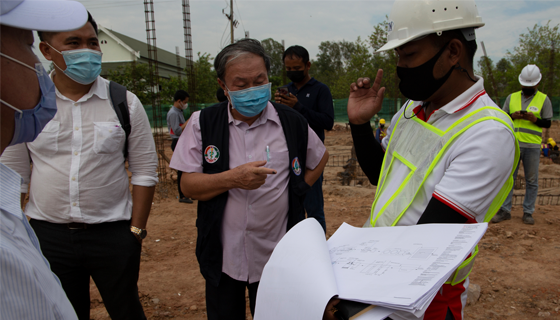
March 15, 2022 — Drawing on both pillars of the Health Emergency Preparedness and Response Program (HEPR Program), the government in Lao PDR is leveraging $5 million in HEPR Program assistance to help tackle key needs in both health emergency preparedness ($2 million) and response ($3 million). And despite having to deal with competing demands driven by the COVID-19 pandemic response, good progress has been made between the project’s initial approval in June of 2021 and the end of the year.
Preparedness: Strengthening health facility and lifeline infrastructure
For health emergency preparedness, waste management is essential but often overlooked. Leveraging a $2 million HEPR Program grant, the government in Lao PDR is working to fill the gap. A detailed workplan has been developed through which valuable opportunities to discuss the state of health facility preparedness on waste management, emergency preparedness, and water and sanitation were provided, and analytical tools that will be crucial to enhancing the preparedness of the Lao PDR against future risks were introduced. Agreed-upon activities for 2022 include:
- Rapid capacity assessment of solid waste and wastewater treatment facilities at selected hospitals and quarantine facilities
- Developing national guidelines and standard operating procedures (SOPs), conducting training on solid waste and wastewater management
- Developing indexes and conducting hazard mapping to measure hospital preparedness and exposure against risks from pandemic and natural disasters; and
- Estimate of water and sanitation resource needs for a health emergency
The HEPR-Program supported preparedness work has also cultivated effective collaboration across developing partners working on this topic including the World Health Organization, the Japan International Cooperation Agency, and UN-Habitat. Discussions are ongoing to further deepen the collaboration.
Response: Equitable and inclusive expansion in COVID-19 vaccination delivery
With funding from the HEPR Program and other mechanisms, government partners implemented a robust roll-out of COVID-19 vaccine services that has increased equitable access through mobile vaccination services, house-to-house sensitization and immunization campaigns, and outreach sessions to reach priority, vulnerable populations such as the elderly, people with disabilities, and those living in hard-to-reach areas. The campaign has involved 616 vaccination teams and covered 154 health care facilities in 18 provinces, with the HEPR Program supporting enabling training, monitoring, and provision of critical items such as personal protective equipment. Lao PDR has also enhanced its Health Management Information system efficiency by integrating the COVID-19 Vaccine Registry modules in the national health information platform – District Health Information Software version 2 (DHIS2). These efficient and timely data updates are augmented with close daily and weekly stakeholder coordination meetings at the national and sub-national levels. To date, 64 percent of the population have had at least one dose, 55 percent are fully vaccinated, and 5 percent have received boosters. Strong government leadership, dedication, and the commitment of the health care workers at the national and sub-national levels, engagement of village heads in community mobilization, close monitoring and coordination by multiple stakeholders, and sound coordination among development partners have been important in making good progress.